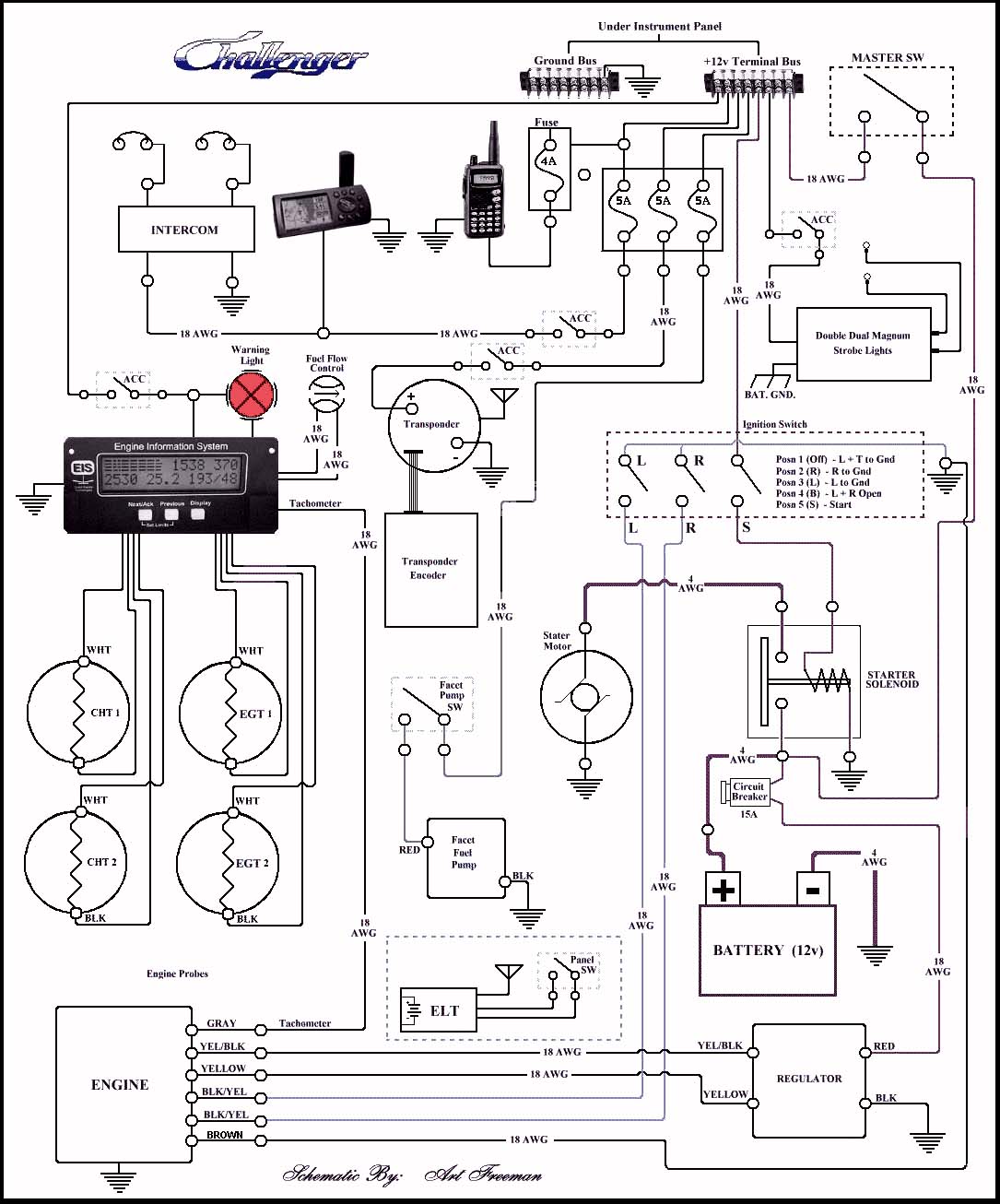Our builder has opted to use a Kuntzleman Electronics Hot Box for his electrical wiring fuse box. This is the simplest way for an interconnect to all the electrical wiring for your Challenger. The hot box provides all the +12v connections you will need for the interconnections to wire your gauges, instruments and other items, such as a landing light. The builder has attached a Key West regulator to the end of the hot box, but removed the regulater later and moved it to the engine area of the fuselage.
Just run the hot, or red wire from your instruments to the +12v terminal block and the ground or black wire from your instruments to the ground terminal block. Kuntzleman provides a hot box schematic which will tell you where to attach your instrument wires.




